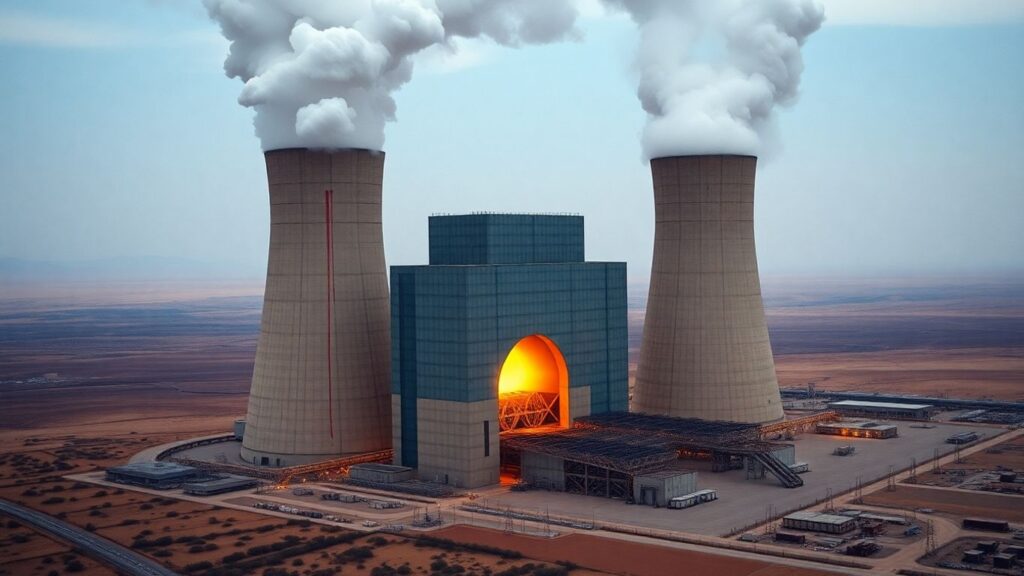Recent advancements in nuclear fusion technology are signaling a potential breakthrough, moving the long-sought-after clean energy source closer to reality. Companies like Commonwealth Fusion Systems (CFS) are making significant strides, utilizing innovative magnet technology to contain superheated plasma, a crucial step in achieving controlled fusion reactions.
Key Takeaways
- Technological Advancements: Innovations in high-temperature superconducting magnets are enabling more stable and efficient containment of plasma.
- Commercialization Push: Private companies are accelerating development, aiming for grid integration within the next decade.
- Regulatory Streamlining: New federal processes are making it easier to deploy fusion reactors compared to traditional nuclear fission.
- Economic Potential: While initial costs are uncertain, the long-term economic viability of fusion is considered highly promising.
- Geopolitical Implications: The successful commercialization of fusion could significantly alter global energy dynamics.
The Promise of Fusion
For decades, nuclear fusion has been the "holy grail" of energy production, promising virtually limitless, clean power. The process involves fusing atomic nuclei, releasing immense energy – the same process that powers the sun. Unlike nuclear fission, fusion produces minimal long-lived radioactive waste and carries no risk of meltdown.
Commonwealth Fusion Systems Leading the Charge
Commonwealth Fusion Systems (CFS) is at the forefront of this technological race. Their facility houses a "tokamak," a donut-shaped device where deuterium and tritium are heated to extreme temperatures, over 100 million degrees Celsius, to initiate fusion. The company’s key innovation lies in its powerful magnets made from high-temperature superconducting tape, which are essential for confining the superheated fuel and maintaining the stability required for fusion.
CFS is not only focused on the science but also on the commercial viability. They are manufacturing these magnets on a factory floor, indicating a serious intent to scale up production for future fusion power plants. CEO Bob Mumgaard highlighted the immense market potential, stating that a technology producing even 1% of global energy could create the world’s largest company.
Overcoming Decades of Skepticism
Fusion energy has historically been plagued by hype and slow progress, often described as being "20 years away." However, a significant breakthrough occurred in 2022 when scientists at Lawrence Livermore National Laboratory achieved net energy gain – producing more energy than was used to start the reaction. This success, coupled with increased private investment, has revitalized the field.
A New Regulatory Landscape
Concerns about regulatory hurdles are being addressed. In 2023, federal authorities announced a streamlined process for regulating fusion reactors, treating them more like less risky particle accelerators than traditional fission reactors. This regulatory shift, solidified by federal law, is crucial for accelerating deployment.
Economic Outlook and Future Investment
The economic feasibility of fusion power is a key question. Fuel sources like deuterium and tritium are abundant and relatively inexpensive. While the initial infrastructure costs will be substantial, proponents anticipate that fusion will eventually become highly competitive with existing energy sources. Companies like CFS are seeking billions more in investment to finance the construction of commercial power plants, with the goal of delivering power to the grid in the early 2030s.
Big tech companies, particularly those powering AI data centers, are showing significant interest, with some already striking deals to purchase fusion power once it becomes available. This demand from "hyperscalers" could provide the necessary capital for the massive build-out required.
Geopolitical Shifts and Challenges Ahead
The advent of commercial fusion power could reshape global geopolitics, potentially reducing reliance on fossil fuels and mitigating international conflicts. However, the transition will not be without its challenges. Existing energy infrastructure may become obsolete, and new regulatory frameworks will be needed. Countries like China are also investing heavily in fusion, suggesting a potential shift in global energy leadership.
While fusion is not yet a present reality, the rapid pace of innovation suggests that the line between futuristic concept and imminent energy solution is rapidly blurring.
Sources
- A Nuclear Fusion Breakthrough May Be Closer Than You Think, Time Magazine.












